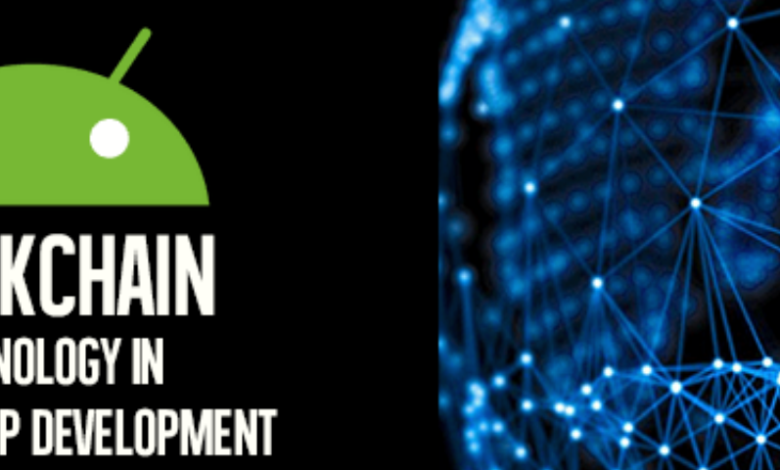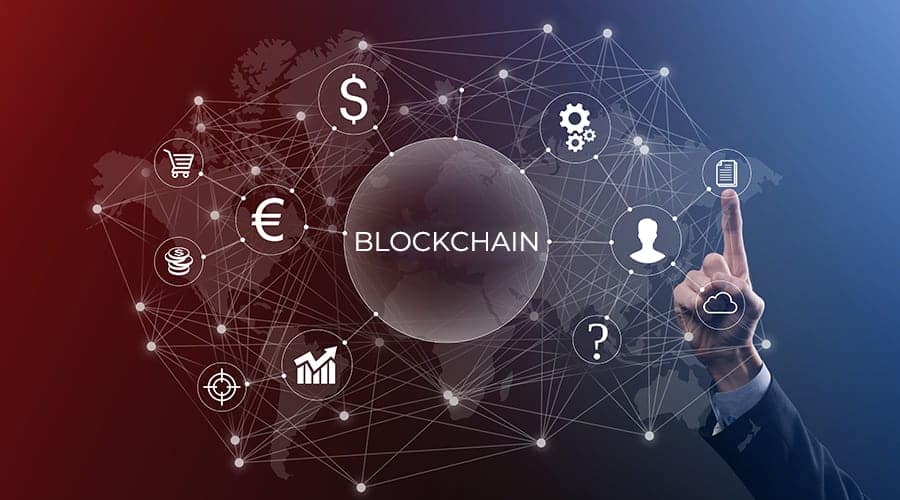How to Build Blockchain Android Apps

Do you know How to Build Blockchain Android Apps? By 2027, the market for blockchain technology is projected to be worth $4 billion, growing at a CAGR of more than 56%. These numbers reveal a lot about blockchain applications and their potential. But what precisely is a blockchain? A distributed ledger of transactions is maintained on a computer network known as a blockchain. Several transactions are contained in each block of the chain. A description of the transaction’s specifics is uploaded to each participant’s blockchain each time a new transaction is made.
Blockchain is a cutting-edge data storage technique that prevents hacking and vandalism. The sections below provide more information on dApp development platforms, blockchain app technologies, and Dubai Blockchain Android App Development.
Read More: 5 Reasons to Use Betting Apps if You Bet Online
Workings and Technicalities of Blockchain Android App Development
Blockchain technology is a method for storing public transactional records across numerous databases in a network connected by peer-to-peer nodes (referred to as “blocks”). The term “digital ledger” is widely used to describe this type of storage. The blockchain will keep track of every data transaction. As a result, the log contains a record of each data transaction, similar to a ledger system. The system’s data transfers are referred to as transactions. In the ledger system, a block is created when a transaction is validated.
Blockchain Android App Development: A Step-by-Step Guide
Choosing the application’s scope and goal is a crucial step in creating any blockchain applications or tokens. It might be a digital currency like Bitcoin, a smart contract for real estate, or something else entirely. Now let’s look at some of the procedures that could enable the creation of blockchain-based Android apps run more easily.
1. Conceptualization
The first step is to decide why you want to use blockchain.
You must decide whether or not blockchain is necessary for your idea and the application’s use cases. It’s critical to remember that blockchain is a method for authenticating transactions and encrypting data; if it’s poorly constructed, it won’t be able to increase transaction security.
After you’ve decided that your project needs blockchain technology, you should be aware that developing a blockchain-based Android app is pricey. This is a result of the various ways a blockchain application can be built, each of which has a unique cost and usefulness. Let’s say you’re a real estate agent looking to create a blockchain-based supply chain application that maintains track of each property you sell. The program’s many use cases and how they will help your company and the customer should be known to you in that circumstance.
2. Locate the Most Effective Blockchain Platform

Once you’ve determined that your company needs blockchain technology, you must chose which system or technology to deploy. You have a choice between two methods.
Make a new blockchain
You can design your own blockchain framework, deciding on the algorithmic framework, technological stack, transaction validation, and token transaction costs. The most thorough but priciest approach to developing a blockchain Android app is this one. You are essentially thinking of producing another Bitcoin or Ethereum, which, despite seeming profitable, can cost you hundreds of dollars. Typically, if you were developing your coin, you would choose this option.
Clone popular blockchain platforms
A more efficient alternative to developing a blockchain-based application is to use a well-known blockchain platform. As the code for these systems is open-source, you can fork it and install it on your servers. The main issue is whether the world ought to accept a blockchain you created. Remember that the viability of a blockchain platform depends on the number of nodes in the network that can validate transactions. The most well-known platforms are Hyperledger Fabric, Hyperledger SawTooth, and Ethereum. Nonetheless, each person has distinctive qualities that could influence their decision-making.
Use tokens on existing blockchain systems
The prior point is slightly modified by this one. We were simulating and deploying the entire blockchain platform on our servers in the previous part, believing we would have enough network nodes to “mine” the transactions. So it’s possible that we’ll “simply manufacture tokens” and then put them on a working blockchain like Ethereum.
These platforms include pre-built APIs, algorithms, and mining techniques that may be quickly incorporated into your application to allow blockchain technology (Blockchain as a Service). You won’t need to setup a new wallet for your tokens or transactions either, as many existing wallets handle Ethereum tokens. This is comparable to setting up a Shopify online store.
Users only need to provide the necessary data to start up their stores on Shopify because all e-commerce features are accessible and ready to use on the platform. The ability to design custom coins in Solidity and use them on Ethereum is comparable. You can use the built-in services of the current platform to carry out transactions with your tokens. Keep in mind that tokens might be either currency or just smart contracts.
3. Development of Prototypes
It is best to design a prototype application first to ensure that everything functions as planned before deploying it to a live server or an established blockchain platform like Ethereum due to the high cost of building a blockchain.
When prototyping the app, decide which components will be “on-chain” and which will be “off-chain.” To put it another way, typical functionality may operate without a blockchain and can be used with standard cloud hosting since you are building a blockchain-powered web or Android app. The application’s transactional component will come next, which you’ll most likely host on a blockchain platform.
The creation of your programmed (or certain parts of it) in a permissioned or permission less network must also be decided.
without authorization networks. Anyone can register and begin verifying immediately. The most well-known examples are the Ethereum and Bitcoin networks.
network to which access has been authorised. In this case, the network owner selects who is allowed to join the network and only a select few are permitted to check blockages. The consensus processes may be exactly like those in a permission less network or entirely different (e.g., authority based).
On-chain and off-chain APIs should be maintained distinct because they will be hosted in various places. Then, decide on a transaction approach and consensus mechanisms for your application. Using an established blockchain platform will make this level simpler because many tasks are already carried out effectively there.
4. Applied Technology
A wide range of technologies are covered at every level of the development of Blockchain applications. Here are a few illustrations. These programmes support the creation of blockchain Android programmes.
- web3.js, Ethereum JavaScript API (Documentation)
- Toshi, Cipher, and Trust are android dApp browsers, whereas Mist, Parity, and Metamask are desktop dApp browsers.
- Embark is a framework for serverless, decentralised apps that makes use of platforms such as Ethereum, IPFS, and others.
- -The truffle is the most popular Ethereum programming and testing framework.
- -Metamask allows you to run Ethereum dApps in your browser without having to run a full Ethereum node.
- -Parity is the most sophisticated Ethereum deployment client.
- Etherscan, an Ethereum block explorer, is used for tracking.
Together with the above mentioned frameworks, app/server development can also make use of common frameworks like react.js, node.js, and native methods for Android apps.
5. Stage of Development
The last phase of developing a blockchain mobile app is crucial. You need to be prepared to create a blockchain application by this point. At this step, you must design or integrate APIs for certain application use cases. There are various software versions available. But first and foremost, an official test of the program’s pre-alpha version has not been conducted. When an application is accepted, it advances to the alpha stage, when the programmed is tested by the developers using white-box techniques.
It’s likely that the programmed doesn’t yet contain all the features, though. The programmed is prepared for the beta version when the alpha version is released. The software programmed is fully working at the beta stage. There might be some problems, though, that have not yet been discovered.
Engineers release the beta version to a small number of individuals outside the company to test its functionality. The Release Candidate version is then reached by the programmed. Once the beta version has been approved and tested, this upgraded beta version is prepared to be released as a final application. The application enters production and is prepared for distribution after extensive testing. An application should be deployed on the network system and thoroughly tested before going live. Administrators can define which software versions should be distributed to which resources when delivering an application using provisioning.
An application needs to be deployed on the main chain after provisioning. You must deploy your blockchain application to the cloud server, the app store, and the play store if it is a hybrid solution made up of both off-chain and on-chain business entities. Once established, a software programmed needs to be maintained to guarantee that it will function with all upgrades in the future.
Blockchain Technology Android App Development In addition to bitcoin and other cryptocurrencies, blockchain applications are utilized for other things. Technology has an impact on many industries, from contract execution to bettering government operations. It could improve transparency and justice while saving companies time and money. Let’s examine some examples of blockchain technology:
1. Stability
One of the most widely used languages among blockchain engineers is without a doubt Solidity. It was created with the Ethereum Virtual Machine in mind, and C++, Python, and JavaScript were design influences (EVM). Because Solidity is integrated, complicated user-defined types, libraries, and inheritance are all possible. Furthermore, the most popular language for creating smart contracts is solidity, which supports the OOP paradigm. Solidity is a programming language used by blockchain developers to create apps that execute self-enforcing business logic in smart contracts, leaving a reliable and authoritative record of all transactions. This makes it simple to create contracts for voting, crowdsourcing, multi-signature wallets, and blind bids.
2. Geth
Go was used to create the Ethereum node implementation Geth. It can be accessed using the interactive console, command-line, and JSON-RPC server interfaces. On all three of the most popular operating systems—Windows, Mac, and Linux—Geth may be used to create Blockchain apps.
In the Ethereum Blockchain, Geth is used for a number of processes, such as token transfers, ether mining, the creation of smart contracts, and block history exploration. You can join to an existing Blockchain or create your own after installing Geth. The good news is Geth streamlines things by joining the Ethereum primary net right away.
3. Mist
The main Ethereum wallet created by Ethereum’s developers is called Mist. You need a specific location where you may hold your Ether tokens and run your smart contracts before you can access the Ethereum network. It works with Windows (32- and 64-bit versions), Mac OS X, and Linux (32- and 64-bit).
Although while Mist is particularly well suited for smart contract implementation, you should keep in mind that it is a full node wallet and that you must download the complete Ethereum blockchain, which is bigger than 1TB. Remembering your Mist password, which is a one-time installation requirement rather than something you can modify, is another crucial issue.
Read More: 10 Tools For Managing Mobile App Development Project Remotely
4. Solc
A C++ command-line compiler for Solidity is called Solc (Solidity Compiler). Its main objective is to translate Solidity scripts into an Ethereum Virtual Machine-friendly format. Despite having a syntax that is comparable to JavaScript and being compressed, the weakly typed language Solidity, smart contracts created in Solidity must be transformed into a format that the EVM can read and decode quickly. Solc now comes into the picture.
There are two versions of Solc: one that only supports C++ and the other that only supports JavaScript. Solc-js uses Emscripten to cross-compile Solc’s C++ source code. On the great majority of Ethereum nodes, Solc is already deployed. It can be used for offline compilation as well.
5. Remix
A Blockchain tool for creating and implementing smart contracts is Remix IDE. Remix is a JavaScript-based tool for developing, testing, troubleshooting, and deploying smart contracts that can be seen in any current browser. Both locally and through a browser, it is compatible. Remix is well-documented and offers a simple Metamask connection process for connecting to the Ethereum blockchain.








10 Comments